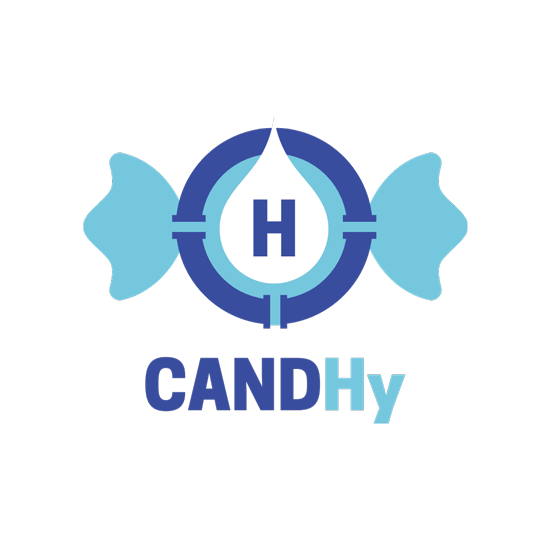Main Goals
CANDHy aims to enable hydrogen distribution in low pressure gas grids through consolidated and exhaustive scientific data, coupled with harmonized guidelines for non-steel metallic grid materials.
At least five material grades of different families (such as cast iron, copper, brass, lead, aluminium), both new and vintage, will be fully documented, and the results will be publicly available for all stakeholders in a continuously updated database. Mechanical tests in static and dynamic conditions will assess hydrogen sensitivity following the most relevant current and updated standards.
The CANDHy project is developed in 5 Work Packages:
work packages
- Coordination and Management
WP1 represents a simple, comprehensive but effective technical, financial, and administrative management plan to ensure the project progress, the compliance of the objectives and the participants coordination in a timely manner, verifying quality and costs.
- Monitor and coordinate the project activities
- Organise project meetings
- Report to the European Commission
- Ensure the quality, knowledge and data research management
Leader: FHa
- Review of the state of the art grid material and existing standards
WP2 performs a full review of the state of art of the European gas distribution grids and the standards and codes on testing regarding material compatibility with hydrogen and hydrogen embrittlement mechanisms, to collect information for the development of useful testing protocols to derive the properties of the classes of materials studied in CANDHy in their relevant operating conditions.
- Identify the metallic non-steel material currently installed in the natural gas distribution grid
- Review codes, standards, and regulation about testing and qualification of metallic materials in hydrogen environment to identify the approach and eventual gaps
- Collect information from technical literature and ongoing as well as past projects on the topic to analyse the outcomes achieved up to date and developed knowledge
- Review literature on hydrogen embrittlement phenomena and parameters influencing the hydrogen uptake inside the material and the embrittlement
Leader: RINA-CSM
- Testing European natural gas distribution new and vintage materials
WP3 focuses on the design, development, and performance of the experimental campaign to test the most relevant non-steel metallic materials found in CANDHy under different hydrogen levels to assess their tolerance towards this gas at operating conditions usual for the distribution grid.
- Adapt the existing testing facilities to the CANDHy’s requirements
- Plan the most suitable experimental campaign for the materials selected (new and vintage), considering blends of hydrogen in NG up to 20%mol and 100% hydrogen
- Prepare the testing samples following the most relevant standards
- Develop a Round Robin test methodology among all the R&D facilities (testing platforms and laboratories) involved in CANDHy to ensure results reproducibility
- Complement the Round Robin test with individual testing campaign to analyse the highest amount of materials possible
Leader: FHa
- Characterisation of natural gas distribution new and vintage materials
WP4 ensures the validation of the experimental campaign performed in WP3 analysing the results obtained and developing a semi-empirical model that can explain hydrogen embrittlement mechanisms in non-steel metallic materials, with the final aim of obtaining pre-normative guidelines for material evaluation under hydrogen service and making the results public in an open database that will be kept updated at the end of the project.
- Document and analyse the effect of hydrogen gas on the non-steel metallic materials tested in the experimental campaign (WP3)
- Develop models for the prediction of hydrogen embrittlement mechanisms
- Propose guidelines, procedures and areas of development to support future standardization related with the testing and qualification of materials of the distribution network in the presence of H2/NG blends
- Design and develop a technical database for hydrogen compatibility of metals as a tool to aid in the selection of materials for use in hydrogen gas distribution
Leader: TECNALIA
- Dissemination, Communication and Exploitation
WP5 ensures D&C of the project results, including the development and implementation of an exploitation strategy increasing the project’s impact. It also develops clustering activities with key stakeholders in across the whole value chain to stablish a solid network as well as include engagement actions with the AB.
- Define, update and execute a communication and dissemination plan
- Define, update and execute the exploitation plan
- Develop activities targeted to different audiences to raise awareness, establishing bidirectional discussions and providing information on the developments of CANDHy
Leader: GERG


